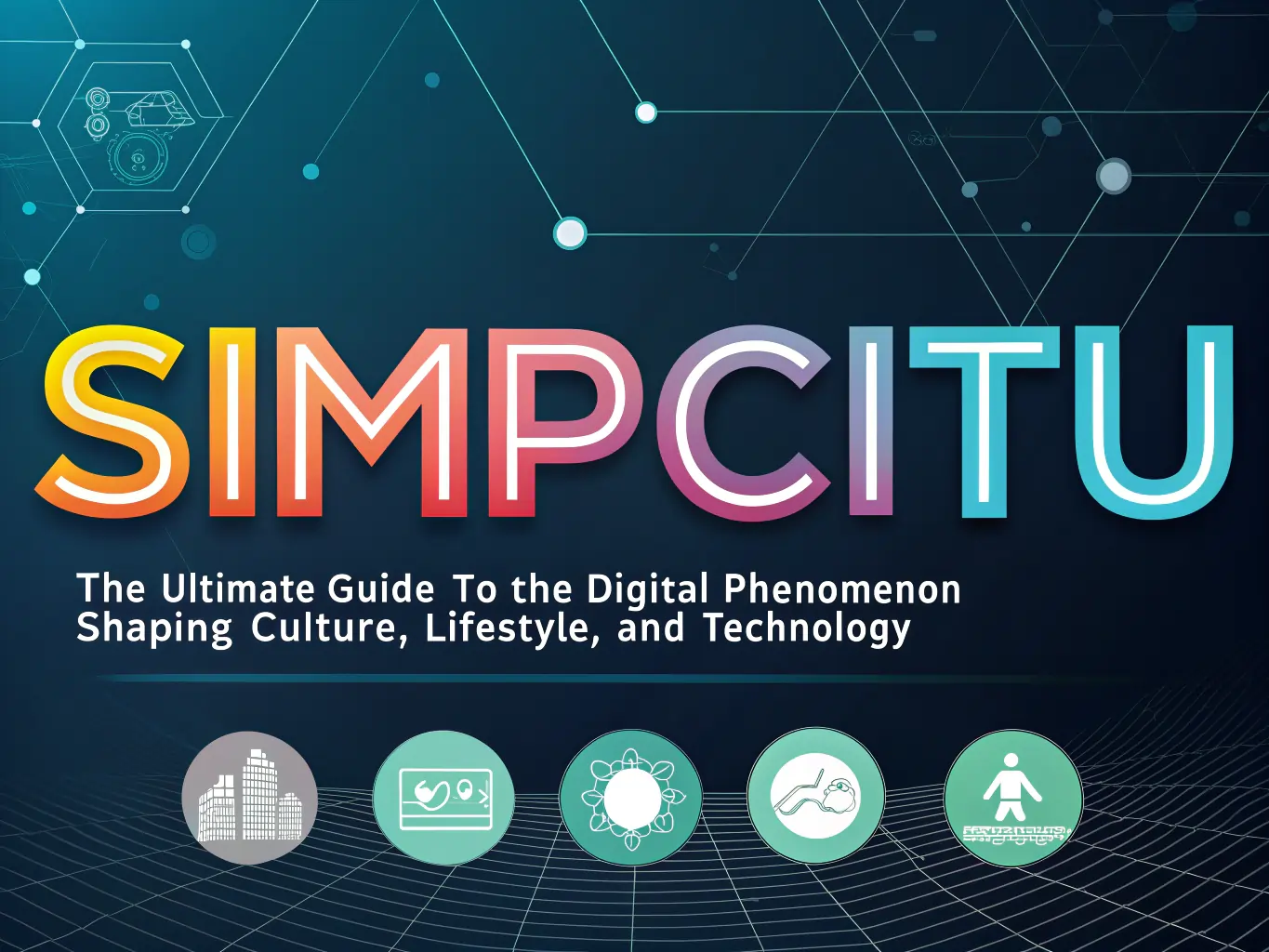What is Simpcitu?
Simpcitu is a term that has emerged in contemporary digital culture, often used to describe a phenomenon that combines elements of admiration, emotional investment, and submission within social interactions. Its origin appears to be rooted in internet slang, where it has evolved over time to encapsulate a spectrum of behaviors seen in online communities, particularly within social media and gaming environments.
The term typically refers to individuals who exhibit excessively devoted behavior towards someone they admire, often leading to a one-sided dynamic. Initially, it was associated with fandoms and the admiration of celebrities, figures in pop culture, or gaming characters. However, as social media platforms expanded, the meaning of simpcitu broadened. It now encompasses a more complex interaction where users may engage in behaviors such as excessive gifting, flattery, or emotional support, often seeking validation or reciprocation that may never materialize.
In various online communities, especially in niche subcultures on platforms like Twitch, TikTok, or Discord, the phenomenon of simpcitu has gained traction. Users often share experiences that depict their struggles with balance between genuine admiration and unhealthy obsession. It has sparked discussions about boundaries in admiration and the psychological implications of such behavior. Additionally, simpcitu can serve as a social commentary on contemporary relationships, illustrating how online interactions can sometimes foster unreciprocated investment.
Overall, while simpcitu still reflects admiration, it has evolved into a multifaceted phenomenon that prompts individuals to explore their motivations behind emotional investments in others within the digital space. Understanding simpcitu involves recognizing its cultural significance and the various ways it influences interactions today.
The Role of Simpcitu in Online Culture
Simpcitu has emerged as a significant cultural phenomenon within various online communities, reflecting changing social interactions and dynamics. This term encapsulates a complex array of behaviors primarily associated with unreciprocated affection or admiration, often in contexts where the individual exhibiting simpcitu appears overly invested relative to the emotional engagement of the other party. The impact of simpcitu can be observed across different platforms, ranging from social media to meme cultures, influencing how individuals communicate and relate to one another in the digital realm.
One prominent manifestation of simpcitu can be seen in memes that humorously depict the often exaggerated lengths individuals might go to for validation from others. These memes serve both to entertain and to amplify conversations surrounding relationship dynamics, particularly in youth culture. By dissecting these forms of user-generated content, one gains insight into how simpcitu shapes community interactions and expectations, as users interact over shared experiences and mutual recognitions of affection or neglect.
However, the interpretation of simpcitu is not uniformly positive. While some may view it as a genuine expression of emotional vulnerability, others critique it as a sign of unhealthy dependence or an erosion of self-respect. Conversations surrounding simpcitu can occasionally devolve into toxic environments, where individuals are ridiculed for their emotional investments. As perspectives on love and attention evolve within online cultures, the discourse around simpcitu remains highly relevant, illustrating both its positive implications for expressing affection and its potential pitfalls leading to disillusionment and negativity.
Ultimately, simpcitu continues to play a pivotal role in shaping online culture, mapping the intricate dynamics of human connection and community that manifest through the lens of digital interaction. Its diverse perceptions deepen our understanding of social behavior in an increasingly virtual world, emphasizing the complexities of emotional exchanges in contemporary society.

Simpcitu: The Good, The Bad, and The Controversy
The concept of simpcitu has sparked extensive debate within both psychological and societal contexts. Supporters of simpcitu argue that it fosters empathy and emotional support among individuals. Advocates assert that it encourages a culture of kindness, wherein individuals demonstrate a willingness to support others, particularly in times of need. This selfless behavior can create an environment of care and compassion, promoting healthier relationships. Case studies have illustrated how simpcitu leads to strengthened community bonds, especially among marginalized groups who benefit from enhanced social support.
However, critics of simpcitu voice concerns about its potential to enable unhealthy dynamics. They argue that simpcitu can lead to emotional dependency or exploitation, as individuals may feel pressured to provide unwavering support without reciprocal arrangements. Anecdotal evidence reveals instances where individuals have found themselves overwhelmed by the expectations associated with simpcitu. Such situations raise important questions about the balance between supporting others and neglecting one’s own mental health and well-being. Critics emphasize that simpcitu can perpetuate a cycle of emotional labor that may leave the supporter feeling depleted or undervalued.
Moreover, the digital age has transformed the nature of simpcitu through social media platforms. Users often showcase their acts of kindness online, leading to a phenomenon where individuals seek validation for their supportive actions. This creates a dual-edged sword effect; while it may bolster one’s self-esteem, it risks commodifying genuine kindness. Sociologists have noted that this performative aspect can diminish the authenticity of interactions, as some engage in simpcitu primarily for social approval rather than genuine altruism. As such, the complexities surrounding simpcitu highlight the need for understanding its psychological effects and recognizing the diverse perspectives that shape its significance in modern society.
The Future of Simpcitu and Its Possible Expressions
The concept of simpcitu has evolved significantly, influenced by various societal, technological, and cultural trends. As we look ahead, it is essential to consider how these factors may shape the future manifestations of simpcitu. One notable aspect is the rapid advancement of technology. As digital platforms become increasingly sophisticated, the ways in which simpcitu is expressed will likely diversify. For instance, virtual reality and augmented reality could present novel methods for individuals to engage in relationships and personal interactions, potentially leading to new interpretations of simpcitu.
Furthermore, shifts in online culture could significantly impact how simpcitu is perceived and practiced. The rise of social media has democratized expressions of affection and vulnerability, allowing users to showcase their feelings more openly. As trends evolve, simpcitu may further adapt to incorporate new cultural narratives surrounding emotional labor and intimacy. The implications of these shifts might inspire a redefinition of simpcitu norms, challenging traditional notions of relationship dynamics in favor of deeper emotional connections.
Generational changes also play a crucial role in the future of simpcitu. Younger generations, often more progressive in their understanding of emotional expression and personal connections, may reinterpret simpcitu in ways that prioritize mental health and empathy. This focus could lead to more nuanced interactions, moving away from previous associations with negativity or one-dimensional traits. As younger people engage with older generations, the dialogue surrounding simpcitu may foster a broader understanding of emotional transparency and connection.
In summary, the future of simpcitu lies at the intersection of technology, cultural evolution, and generational perspectives. Engaging critically with these influences will be essential for understanding how simpcitu continues to evolve in today’s interconnected world.





Leave a Reply